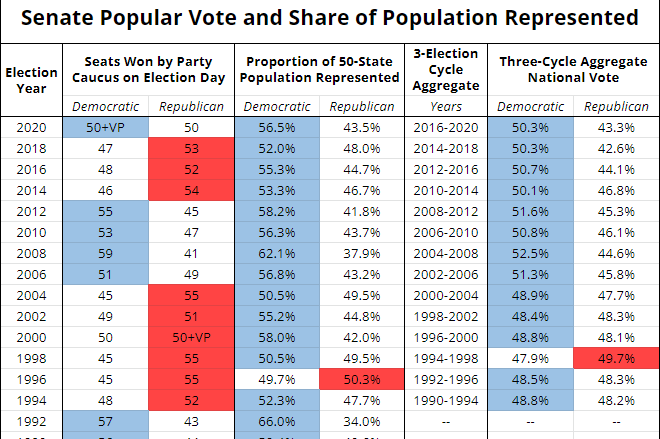
Over the course of its last few terms, the Supreme Court has effectively placed itself in charge of the executive branch.
It’s given itself an extra-constitutional veto power over virtually any policy decision made by a federal agency. Even when it ultimately rules in favor of President Joe Biden’s policies, it often sits on those cases for months, allowing a lower court order to suspend Biden’s programs for as much as a year.
Meanwhile, the Court has done extraordinary favors for America’s only recent Republican president. Just look at the Republican justices’ decision to immunize former President Donald Trump from prosecution for criminal actions he committed while in office.
SCOTUS, Explained
Get the latest developments on the US Supreme Court from senior correspondent Ian Millhiser.
Email (required)Sign UpBy submitting your email, you agree to our Terms and Privacy Notice. This site is protected by reCAPTCHA and the Google Privacy Policy and Terms of Service apply.
The president, in other words, is increasingly subordinate to the courts. Yet, as the judiciary seizes more and more power, the battle over who gets to shape it grows increasingly lopsided.
Republicans enjoy an advantage in the Electoral College. Just how much is up for debate, but that advantage does mean that even if the American people hand Vice President Kamala Harris a modest victory in the popular vote this November, Donald Trump could still become president. He’d then get to nominate loyal Republican judges eager to implement his party’s agenda from the bench, much as he did during his first term.
Even if Harris wins by a large enough margin to overcome the Electoral College’s Republican bias, she still may not get to have much of an impact on the judiciary. Her presidency — and specifically her ability to name judges — is likely to be restricted by a Republican Senate. For Democrats to control even a tied 50-50 Senate, one in which Vice President Tim Walz would hold the deciding vote if Harris prevails, they must not just win in every single blue and swing state Senate race this year, but also Senate races in at least two of the red states of Ohio, Florida, Montana, and Texas.
That could happen, but it would require the kind of unusually triumphant Democratic election year that the party hasn’t seen since at least 2008 and possibly not since President Bill Clinton’s landslide reelection victory in 1996. And that seems quite unlikely.
A Harris victory could halt America’s slide into a MAGA-dominated future but it is unlikely to give her the power to reshape the judiciary in the way Trump was able to during his first term.
The Electoral College and Senate malapportionment has completely warped the judiciary
During the Biden administration, the Republican Supreme Court wielded its power aggressively. It greenlit abortion bans in numerous red states. It abolished affirmative action at nearly all universities. It has turned itself into a printing press for court orders benefiting the Christian right. It’s given itself sweeping veto power over literally anything done by a federal agency that should be controlled by the president. And then there was that whole affair where the Republican justices said that Donald Trump was allowed to commit crimes while he was in office.
Along the way, the Court has pulled new legal rules out of thin air, then used these newly invented rules to nullify many of Biden’s most ambitious programs.
If the American people had voted for this agenda then it would be difficult to criticize the Republican Party for pushing it. But the electorate did nothing of the sort.
After 2016, Trump was in a position to nominate three Supreme Court justices not because most Americans wanted him to be president but because enough Americans in the right places did. The Electoral College system means each American’s vote is not equal: Hillary Clinton, after all, won nearly 3 million more votes than Trump in 2016, but still lost the presidency.
Trump had a Republican Senate willing to put his choices on the bench because Republicans have an enduring advantage in the upper chamber, one that makes it more difficult for Democrats to control the Senate. Each state, regardless of population, gets two senators.
These antidemocratic features of the US Constitution have been with the United States almost from the beginning, but they have an increasingly pronounced effect today, largely because the parties have sorted based on population density. People in cities and other densely populated areas tend to vote for Democrats, while outlying areas become more and more Republican as they become less dense.
That means that a system that effectively gives extra representation to the most sparsely populated states will unfairly favor the Republican Party. In 2021, for example, when the Senate split evenly between Democrats and Republicans, the Democratic “half” represented nearly 42 million more people than the Republican “half.”
Though the trend appears to be accelerating, this antidemocratic skew long predates the Trump presidency. Senate malapportionment has been one of the most consequential factors shaping US politics for decades. By some counts, if senators were distributed equally according to how the majority of Americans voted, Democrats would have controlled the Senate in every single year since the late 1990s.

In that world, Democrats not only may have enacted more significant legislation, they would also almost certainly control the courts. Obama would have confirmed a justice to fill the vacancy created when Justice Antonin Scalia died in Obama’s last year in office, and none of Trump’s nominees would have likely been confirmed.
Similarly, while Republicans probably would have still filled some Supreme Court seats during the 1990s and 2000s, it’s unlikely that they would have successfully confirmed an ideologue like Justice Clarence Thomas or an unapologetic GOP partisan like Justice Samuel Alito if Senate seats were distributed fairly by population. In a fair Senate, Republican presidents would have to negotiate with Democrats to choose moderate nominees in the vein of, say, Justices Lewis Powell and Sandra Day O’Connor.
That is to say, the impact of recent population sorting is felt acutely in the courts. In all of US history, only three justices were nominated by a president who lost the popular vote and confirmed by a bloc of senators who represent less than half of the nation’s populace. All three of them currently sit on the Supreme Court; they are Gorsuch, Brett Kavanaugh, and Amy Coney Barrett, Trump’s three appointees to the Court.
What a broken Senate means for a potential Harris administration
In the event that Harris wins the presidency but Republicans capture the Senate, we only need to turn the clock back less than a decade to predict what is likely to happen.
Obama’s final two years in office were the only two when Republicans controlled the Senate. And shortly after Scalia’s death in February 2016, Senate Republicans announced that they would confirm no one Obama nominated to fill that seat.
“This vacancy should not be filled until we have a new president,” then-Senate Majority Leader Mitch McConnell announced at the time. (Four years later, when Justice Ruth Bader Ginsburg’s death allowed Trump to fill a vacancy in the final months of his presidency, Republicans abandoned the position they adopted in 2016 and swiftly confirmed Trump’s nominee.)
The GOP’s blockade on Supreme Court confirmations should have surprised no one who watched the Senate closely because Senate Republicans had already imposed a near-total halt on all confirmations to federal appellate courts, powerful bodies that hand down precedential decisions that determine what the law is in multiple states at a time. In Obama’s last two years in office, he successfully appointed only two judges to the appellate bench, and one of these judges was confirmed to a highly specialized, relatively nonpolitical court that primarily deals with patent law.
By contrast, President George W. Bush confirmed 10 appellate judges during his last two terms in office, during a period when Democrats controlled the Senate.
Similarly, during Obama’s last two years in office, he appointed only 18 judges to federal district courts, the lowest rank of federal judge who enjoys a lifetime appointment. That compares to 58 judges during Bush’s final two years in office, according to data from the Federal Judicial Center. In Trump’s final two years in office, when Republicans controlled both the White House and the Senate, an astonishing 121 district judges were confirmed, including some infamously partisan judges like Aileen Cannon and Matthew Kacsmaryk.
President Biden, for what it’s worth, has confirmed more than 200 judges thanks to Democrats’ narrow majority in the Senate, including a total of 116 since the current Congress took office. Over his entire presidency, he’s filled 44 appellate seats.
Without the power to confirm judges, Harris will have no way to dilute the influence of judges like Cannon or Kacsmaryk, and Republicans could easily refuse to confirm anyone to any judicial vacancy that comes open until the GOP regains the White House. Alternatively, Harris may be able to strike deals with Republicans to confirm a few of her preferred judges, but the GOP has a history of demanding a very high price to confirm even a single Democratic judge.
In 2014, for example, thanks in part to a now-weakened Senate process that allowed senators to veto anyone nominated to a federal judgeship in their state, Georgia’s Republican senators convinced Obama to nominate four Republican judicial choices — including a Republican appellate judge — in return for confirming only two Democrats. One of the Republican nominees was eventually dropped because his views on abortion, marriage equality, and the Confederate Flag offended Democrats, but Republicans still walked away with more confirmed judges than Obama did. Harris could very well find herself in a similar situation.
The problems for Harris likely wouldn’t stop there. Because Republicans continue to dominate the judiciary, Harris would likely spend her presidency watching her policies get struck down on dubious legal theories invented by GOP judges, much as the Supreme Court struck down President Biden’s student loan forgiveness policy despite the fact that it was unambiguously authorized by an act of Congress.
Democrats are starting to awaken to the threat of a Republican judiciary, but they haven’t yet found a solution to their constitutional problem
Absent constitutional reform, Democrats have good reason to fear a Republican judiciary for decades to come. A malapportioned Senate means that Democrats are increasingly defenseless against the GOP’s efforts to control the bench. In recent years, however, Democrats have become more aware of a GOP judiciary’s power to thwart their agenda and have started to try to explore ways around it.
Historically, elected Republicans have viewed the courts as a favorable issue that rallies their base, while Democrats have behaved much more cautiously. Many Republicans credit Trump’s decision to delegate judicial selection to the Federalist Society, a bar association for right-wing lawyers, and to release a list of potential Supreme Court nominees during his 2016 candidacy, for giving him enough support to prevail in that year’s election.
Biden, by contrast, began his presidency very reluctant to take on the courts. After many Democrats called for Supreme Court reform in the wake of the Senate’s disparate treatment of the Scalia and Ginsburg vacancies, Biden tried to take the wind out of the sails of reform by promising to appoint a commission to study the issue — and then filling the commission with Republicans and scholars who historically have not supported reform.
But, as the Supreme Court’s polling numbers collapsed and as the Court outraged elected Democrats with opinions like its Trump immunity decision, Democrats have grown more aggressive. Biden proposed term-limiting the justices and imposing a binding ethics code on the Court, proposals also supported by Harris. Senate Majority Leader Chuck Schumer (D-NY) has a bill that would strip the Court of jurisdiction to enforce its immunity decision.
One of the most ambitious recent Supreme Court reform proposals, from Sen. Ron Wyden (D-OR), includes a number of very aggressive reforms. Wyden’s proposal would make every justice submit to a tax audit each year, require a two-thirds supermajority for the Court to overrule an act of Congress, and gradually expand the size of the Court to 15 seats.
Yet, while these proposals show that Democrats are moving in a more court-skeptical direction than they were four years ago, they would not solve the structural problems with US democracy that gave us the courts we have today. And they have virtually no chance of passing, especially in a world where it is increasingly difficult for Democrats to win the Senate even when they convincingly win the national popular vote.
Realistically, turning the United States into a nation where every vote counts equally — and where each voter is actually able to shape the judiciary — would require rewriting its Constitution. Until that happens, Democrats like Harris will struggle to win elections even when most Americans support them. And Democratic presidents will increasingly be at the mercy of Republicans in both the Senate and the courts.
Source: vox.com






